
views
Cleaning up Wet Glue
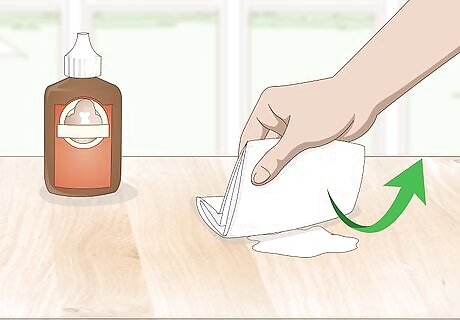
Wipe away excess glue with a paper towel. Before attempting to treat the glue, remove as much of it as you can by hand. Use a disposable cloth or else you will end up with another sticky surface to clean.
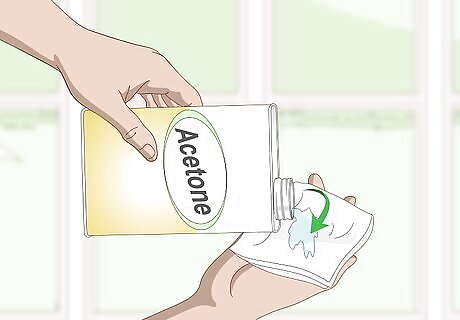
Dampen another paper towel in acetone. Acetone is an ingredient in most nail polish remover. Pick up a bottle of nail polish remover at a general store, checking the label to make sure acetone is included. Then pour a little onto a paper towel or cotton swab, enough to dampen it without soaking it. Paint thinner or acetone from a home improvement store can also be used. It is stronger, so you run the risk of fading the color on painted wood. Another option for this is a commercial super glue remover. This product is typically sold at home improvement stores.
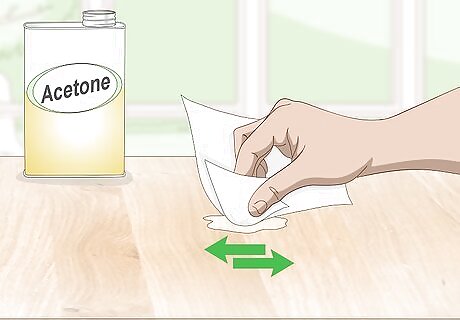
Use the paper towel to scrub the glue. Quickly rub the dampened part of the paper towel back and forth over the glue spot. Press down hard to apply pressure, preventing the glue from settling. Reapply the acetone when the towel begins to dry. Continue scrubbing the spot until no more glue comes off.
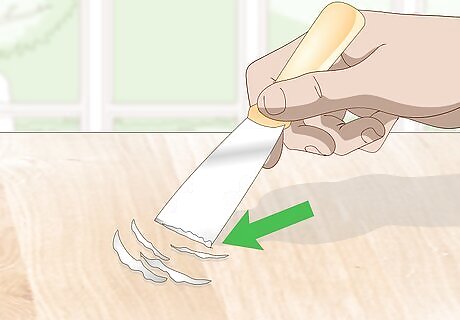
Scrape the remaining glue away with a putty knife. Hold the putty knife flat against the wood. Gently dig the blade into the glue to scrape it off. Work slowly to avoid putting any ugly dents in the wood. You can apply more acetone with a paper towel to loosen up the glue again. Eventually, the wood will be back to normal. Sandpaper rated 80-grit or higher is another option. This can damage the wood if you aren’t careful. Rub away at the glue and stop when you reach the wood.
Rubbing off Dry Glue
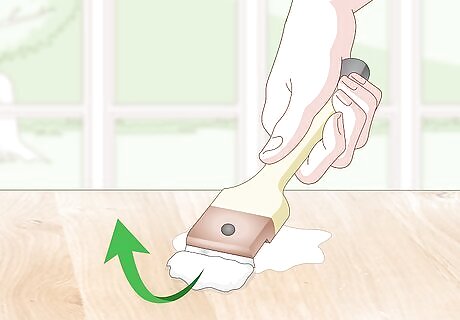
Use a paint scraper to remove most of the glue. A paint scraper from a hardware or home improvement store is perfect for removing large chunks of glue. Place the wood on a flat surface, if you can. Hold the blade end flat against the wood. Applying pressure, dig the blade into the dried glue and move it along the wood to shave off most of the glue. Most of the super glue will come off in a long strip. Go back over any spots that still have large amounts of glue.
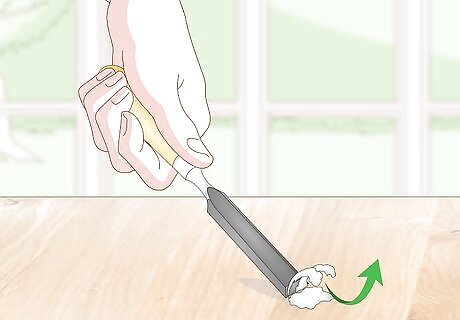
Use a chisel to remove smaller amounts of glue. A chisel works the same way as a paint scraper, except it has a smaller head. Use it to focus on small, difficult areas and corners the paint scraper can’t reach. Hold the blade flat against the wood and scrape off the glue the same way you did before.

Sand off the remaining glue. Pick up a sanding block from the home improvement store if you don’t already have one. Place the block on top of the glue and begin scrubbing the spot. Apply pressure as you do this to break through the glue. It should begin flaking off right away, so watch carefully to avoid sanding the wood itself. A power sander can also works if you know how to use one.




















Comments
0 comment